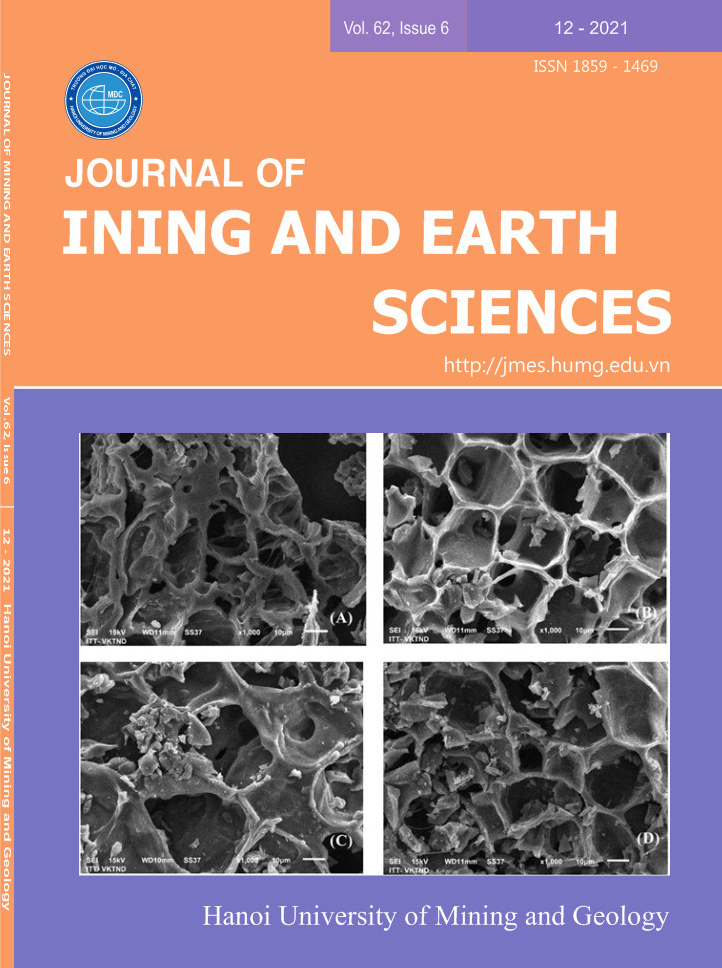Numerical modeling of slope stability incorporating complex reinforcement solution in high-risk failure area- unusual case study
Tóm tắt
The rapid economic development of Vietnam triggers a number of challenges in all sectors including infrastructure design and execution. New development plans and lack of space in densely populated and economically valuable areas creates a need for complex engineering solutions to meet the demand. The present research is a case study investigating reengineered vast natural slope to meet all requirements for geotechnical safety such as maximum displacements and factor of safety. Complex ground conditions and significant dimensions of the slope made the entire structure very likely to cause major risk for the future development plan of the site. Due to complex conditions, the slope was divided into 4 main sections. Each section was reinforced using a combination of soil nails, ground anchors, drainage systems and micro piles, of 19m for a single pile. Due to very much limited space available new geometry of the slope was designed for inclination reaching 1:0.3. Based on numerical modelling and computation the results revealed that the maximum lateral displacements felt in a range of 37-50x10-3 m and the factor of safety was 1.56-1.65, depending on a section and analysed scenario. The computations allowed proposing combined geotechnical solutions for very much challenging sites, assuring high safety standards and fitting the entire design within a limited available area.Tài liệu tham khảo
Babu, G. S., Murthy, B. S., Murthy, D. S. N., & Nataraj, M. S., (2004). Bearing capacity improvement using micropiles: A case study. GeoSupport, 692-699.
Bayesteh, H., Fakharnia, M. A., & Khodaparast, M., (2021). Performance of Driven Grouted Micropiles: Full-Scale Field Study. International Journal of Geomechanics, 21(2), 04020250.
Berglund, E. Z., Monroe, J. G., Ahmed, I., Noghabaei, M., Do, J., Pesantez, J. E., ... & Levis, J., (2020). Smart infrastructure: a vision for the role of the civil engineering profession in smart cities. Journal of Infrastructure Systems, 26(2), 03120001.
Blanco-Fernandez, E., Castro-Fresno, D., Díaz, J. D. C., & Lopez-Quijada, L., (2011). Flexible systems anchored to the ground for slope stabilisation: Critical review of existing design methods. Engineering Geology, 122(3-4), 129-145.
Brinkgreve, R. B. J., Swolfs, W. M., Engin, E., Waterman, D., Chesaru, A., Bonnier, P. G., & Galavi, V., (2010). PLAXIS 2D 2010. User manual, Plaxis bv.
Crosta, G. B., & Frattini, P., (2008). Rainfall‐induced landslides and debris flows. Hydrological Processes: An International Journal, 22(4), 473-477.
Dai, F. C., Lee, C. F., & Ngai, Y. Y., (2002). Landslide risk assessment and management: an overview. Engineering geology, 64(1), 65-87.
Dhar, U., (2021). Asian Development Bank (ADB), What Drives Innovation in Asia? Asian Development Outlook 2020.
Elia, G., Cotecchia, F., Pedone, G., Vaunat, J., Vardon, P. J., Pereira, C., ... & Osinski, P., (2017). Numerical modelling of slope–vegetation–atmosphere interaction: an overview. Quarterly Journal of Engineering Geology and Hydrogeology, 50(3), 249-270.
Ellis, I. W., (2020). Ground anchors. In The Maintenance of Brick and Stone Masonry Structures (pp. 271-281). CRC Press.
Farshidfar, N., & Nayeri, A., (2015). Slope stability analysis by shear strength reduction method. Civil Engineering and Urbanism Journal, 5, 35-37.
Fredlund, D. G., Xing, A., Fredlund, M. D., & Barbour, S. L., (1996). The relationship of the unsaturated soil shear strength to the soil-water characteristic curve. Canadian geotechnical journal, 33(3), 440-448.
Lazarte, C. A., Robinson, h., & Gómez, J., (2015). Soil Nail Walls Reference Manual: FHWA-NHI-14-007.
Nguyen, P. N., Woo, S. H., Beresford, A., & Pettit, S., (2020a). Competition, market concentration, and relative efficiency of major container ports in Southeast Asia. Journal of Transport Geography, 83, 102653.
Nguyen, P. T., Likhitruangsilp, V., & Onishi, M., (2020b). Success factors for public-private partnership infrastructure projects in Vietnam. International Journal on Advanced Science, Engineering and Information Technology, 10(2), 858-865.
Osiński, P., Dobrzelewski, B., Koda, E., & Król, P., (2020). Slope stability analyses incorporating soil improvement methods for valuable urban area. In Geotechnics for Sustainable Infrastructure Development (pp. 803-808). Springer, Singapore.
Peck, R.B. ,(1969). Deep Excavation and Tunneling in Soft Ground. State-of-the-Art Report. Proceedings of the 7th International Conference on Soil Mechanics and Foundation Engineering, Mexico, 225-325.
Rahardjo, H., Hritzuk, K. J., Leong, E. C., & Rezaur, R. B., (2003). Effectiveness of horizontal drains for slope stability. Engineering Geology, 69(3-4), 295-308.
Seah, S., Ha, H. T., Martinus, M., & Thao, P. T. P., (2021). The state of Southeast Asia: 2021 survey report.
Tang, A. M., Hughes, P. N., Dijkstra, T. A., Askarinejad, A., Brenčič, M., Cui, Y. J., ... & Van Beek, V., (2018). Atmosphere–vegetation–soil interactions in a climate change context; impact of changing conditions on engineered transport infrastructure slopes in Europe. Quarterly Journal of Engineering Geology and Hydrogeology, 51(2), 156-168.
Thyagaraj, T. (2019). Ground Improvement Techniques and Geosynthetics. Springer: Berlin, Germany.
Wan, S., Nian, T., Jiang, J., & Luan, M. T., (2010). Discussion on several issues in slope stability analysis based on shear strength reduction finite element methods (SSR-FEM). Rock and Soil Mechanics, 31(7), 2283-2290.
Zettler, A. H., Poisel, R., Roth, W., & Preh, A., (2020). Slope stability analysis based on the shear reduction technique in 3D. In FLAC and Numerical Modeling in Geomechanics (pp. 11-16). CRC Press.
Zhang, C., Lijun, S. U., Weizhi, C. H. E. N., & Jiang, G., (2021). Full-scale performance testing of bored piles with retaining walls in high cutting slope. Transportation Geotechnics, 29, 100563.


